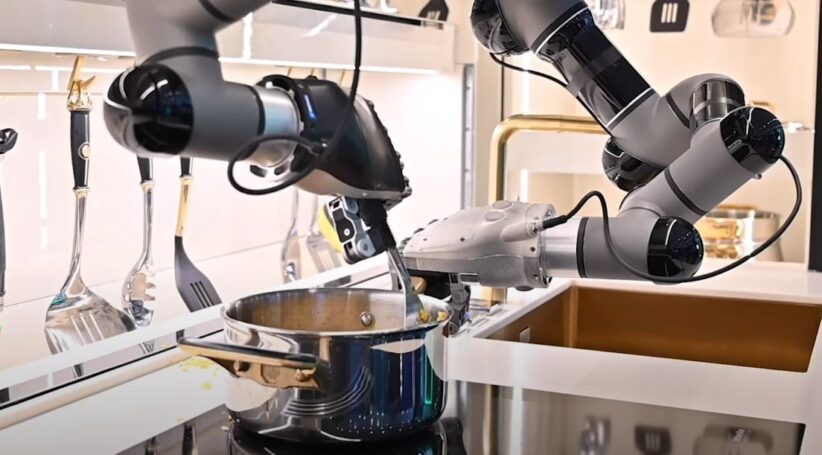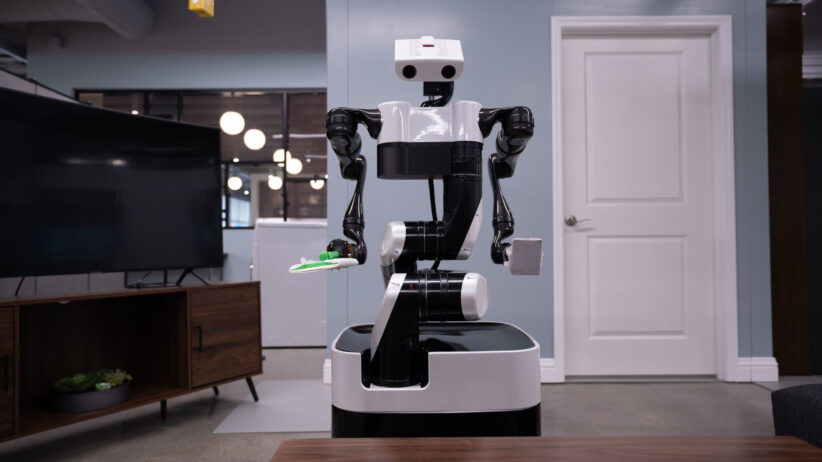Nowadays, we all want ways to simplify work. If you visit industries and factories, you’ll find many machines and robots performing both basic and complex tasks. In your house, you can replicate the same with home robotics.
Basically, you’re building a robot or, more simply, a device to help with jobs around the house. You’ll need a motorized system to control the devices to ensure they’re automated. Obviously, if you have to use them manually, they no longer qualify as home robotics. One way to actualize robotics at home is by using a linear actuator. Read on as we dive deeper into how these motion devices help in such an application.
Why Home Robotics Usage Is on the Rise

More and more people are turning to smart home systems for comfort and security. This is evident if you listen to what the market says. Currently, the smart home industry is worth $93.98 billion, up from $80.21 billion in 2022. It’s expected to multiply over 3x by 2030 to reach $338.28 billion.
Indeed, technological advancements are pioneering the high demand for home robotics. However, government policies and initiatives are also playing a major role. A good example is the Digital Europe Programme launched in 2019, focusing on making digital technology more accessible to businesses and citizens.
So, evidently, there’ll be more demand for home robotics as time goes on. You’ll miss out if you don’t take advantage of the simple life the devices offer.
Uses of Robotics Around the Home
You can design almost any type of device to help at home. It all depends on what tasks you want to accomplish. As examples, here are some areas you can use home robotics:
- Opening and closing doors and windows.
- Cleaning, vacuuming, mowing, and other similar tasks.
- Adjusting your televisions, computers, CCTVs, and other similar setups.
- Lifting and lowering furniture like your bed, chair, tables, shelves, and others.
- Moving and positioning items while you work.
The list will be endless if we keep mentioning applications. As stated already, home robotics can help almost anywhere. But when it comes to types, you have two options: autonomous or semi-autonomous.
Autonomous home robotics
Autonomous home robotics require zero human control. You power these devices on, and they operate and take action without your input. Instead, the robots use native goals and preferences to execute tasks. With this, it’s understandable why such home robotics can be difficult to build. Most use machine learning and AI to perform better, and they’re most common in security applications.
Semi-autonomous home robotics
Semi-autonomous home robotics can operate on their own. However, you must first specify what the devices would do before it starts acting. For instance, you may have a semi-autonomous home robot to help you lift your television. The device will lift your TV without any manual assistance, but you must first specify factors like the lifting speed and height.
Robotic Arm using Linear Actuators

When it comes to robotics, it’s all about motion. That’s why you need a sturdy motorized system, and as mentioned before, linear actuators are an excellent option. If you’re wondering what type of home robotics to construct, we recommend a robotic arm. It’s a project you can complete easily.
A robotic arm can hold, grab, move, and place objects – just like a real arm. You use the linear actuator to control its movement remotely. Alternatively, you can use an Arduino board and program the actuator for a completely autonomous operation. Besides the actuator, when building your motorized arm, it’s critical to use the right robotic components. Skip that, and you’ll have a defective device on your hands.
Linear Actuators Used In Home Robotics
Linear actuators from firgelliauto.com simplify many tasks around the home. The advantage is that these devices ensure motion is smooth, precise, and efficient. But there are different types available. The right one will depend on your home robotic project. You can check out the examples below:
Micro actuators
If you’re setting up a home robotic application with limited space, microactuators are your best bet. For instance, you can use them to automate small doors, cupboards, drawers, windows, and locks. Even a small-scale robotic arm (like a micro gripper) can use microactuators. Such devices are easy to install and manage. You can opt for a microactuator with feedback and get higher precision and versatility.
Track actuators
These motion devices run along track and rail systems. They still feature a motor and gear but with a fixed stroke length since the track system helps them cover a long distance. Some applications of track actuators in home robotics include swimming pool covers, enclosures, lifts, and ladders.
Lift actuators
Lift actuators push an object up or down, in and out of a compartment. A good example of this device in a home robotic application is a television lift. The actuator lifts the TV out of a compartment in a cabinet or behind a wall. Similarly, lift actuators also work in dropdown systems. Here, the motion device lowers the TV from an above compartment, like in a ceiling.
Industrial actuators
You’ll need industrial actuators for more advanced and demanding home robotic projects. Particularly, these devices are the go-to for applications that require high force, speed, and precision. Consider a solar tracker that adjusts the panels towards the direction of the sun. Such an automation setup will require an industrial actuator.
Conclusion

Leverage home robotics, and you’ll spend less time and energy handling tasks around the house. There’s no limit to the application, as you can construct or buy about any type of autonomous or semi-autonomous device. Ensure you use the right linear actuator, among other parts, for maximum performance.
Contents
